News:
The first pattern to be published in my web shop this year has been a fabulous success so far: the Hot Little Hands fingerless mittens by EclatDuSoleil.

This pattern gives instructions for no fewer than four different sets of fingerless mittens, each with its own stitch pattern, worked using the same basic construction.

The mittens are worked in a fingering weight yarn, and the examples shown were made in merino and alpaca. More information in the shop!
Working through only one loop:
When I worked up the new version of my Mitered Squares Scarf, renamed Kubix, I realized it was time to talk about working through only one loop again.
I actually wrote an article about this several years ago for the Crochet Me site, but I don’t think I’ve ever discussed it in the newsletter. It’s such a simple way to play with stitches, and you can achieve such interesting results!
When you look at the top of your crocheted stitches, you can see two loops forming a V. The one closest to you is the front loop, and the one furthest from you is the back loop.
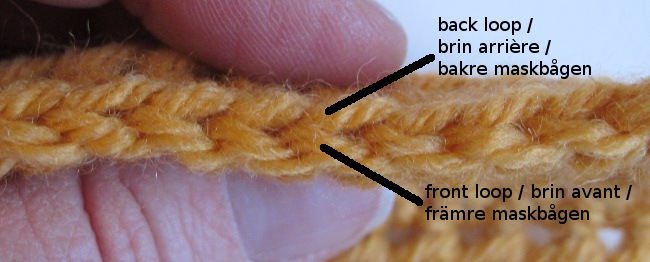
This is valid all the time, on the right or wrong side of your work. The front loop will always be the one closest to you when you hold your work ready to make a new stitch.
A « normal » crochet stitch is worked through both loops. Working in only one of these loops will yield a different fabric. And depending on which loop you decide to work through, the effect will be quite different.
Look at these swatches, all worked in single crochet with ten stitches and ten rows, using the same yarn and hook.
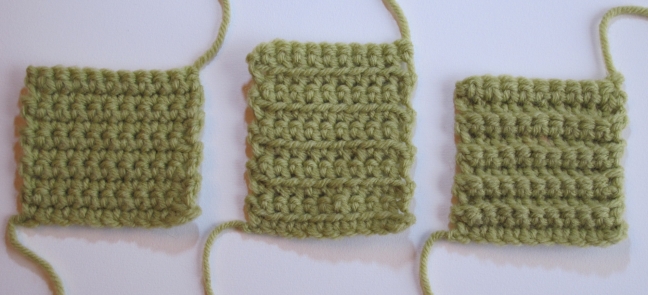
From left to right: single crochet through both loops (sc), single crochet through front loop only (sc flo) and single crochet through back loop only (sc blo).
What might strike you first is that the sc flo swatch is noticeably taller than both the others. Since all the swatches have the same number of stitches, this means that the fabric in the sc flo swatch is thinner, and lies flatter. The other differences can be a bit hard to see in a photo, but the third swatch, in sc blo, is very elastic. Sc blo is often used as ribbing in crochet, worked vertically.
Generally, a fabric worked through the front loop only will have more drape than the same stitch pattern worked through both loops. When you work through the back loop only, you will get more elasticity and more texture. Crochet stitches are not the same on the right and the wrong side, and by working through only one loop you will change the position of the stitch in the fabric, making one or the other side of the stitches more obvious.
Let’s have a look at the same type of swatches worked in double crochet.
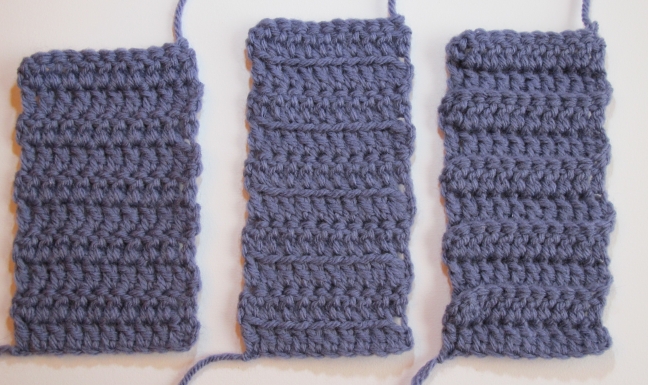
From left to right: double crochet (dc), double crochet through front loop only (dc flo) and double crochet through back loop only (dc blo).
The differences in size are less obvious here. I believe this is because what changes when you work through one loop only is the height of the join between rows. The actual stitches stay the same. With a shorter stitch, like sc, the joins correspond to a larger proportion of the fabric surface. With dc, the actual stitch represents the major part of the fabric surface.
Still, the swatch in dc flo is taller and thinner. The swatch worked in dc blo has a more distinctive texture than the two others – the rows are very obvious. It is not as stretchy as the sc blo, but still much stretchier than the first swatch, in which the stitches are worked through both loops.
Now, let’s have a look at one of my favourite stitches for this type of work, the half double crochet.
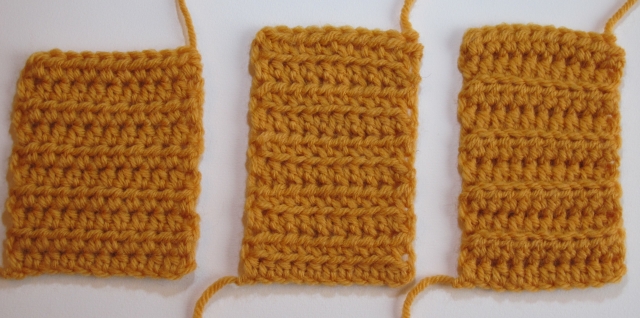
From left to right: half double crochet (hdc), half double crochet worked through front loops only (hdc flo) and half double crochet worked through back loops only (hdc blo).
Once again, the hdc flo is the flattest and drapiest one, and the hdc blo is the most textured and stretchiest one. It’s perhaps slightly less stretchy than the sc blo, but can be used as ribbing to great advantage – see the Hot Little Hands pattern mentioned above!
Because of the structure of the hdc stitch itself, there are also some extra features. The hdc flo swatch has an extra horizontal line of loops, and the ridges on the hdc blo swatch look almost like chains.
I really like these characteristics, but the structure of the stitch can also lead to confusion. Let’s take a closer look.
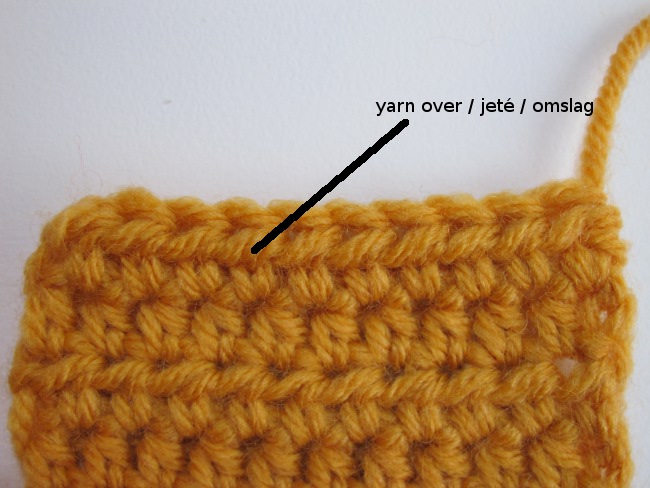
On the wrong side of the hdc in the previous row, the tops of the stitches appear to present themselves, ready to be worked into. Beware! What looks like a very accessible front loop is actually the yarnover in the hdc.
You will need to flip the work towards you to see the actual tops of the stitches.
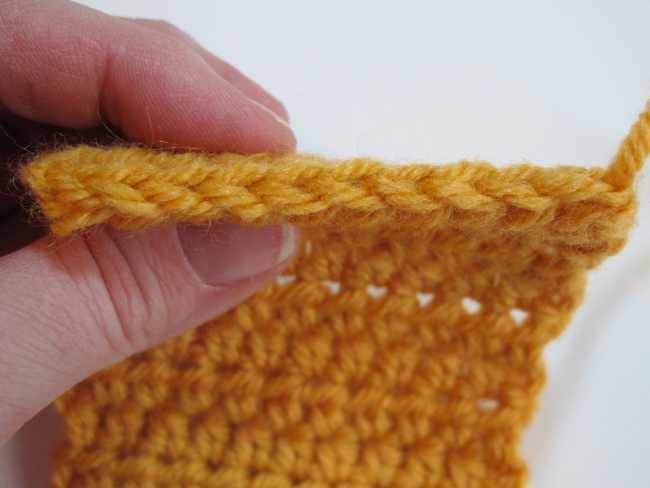
These are the front and back loops of the hdc stitch. (You can work through the yarnover too, of course, but that’s a whole different story.)
If you find it difficult to distinguish the top of the stitch with the front and the back loop, try working a stitch paying close attention to the loop that is already on the hook when you start the stitch. This is the loop that will « fold over » to form the top of the stitch when it’s finished. Once you know where it sits, you will know where to put your hook. And now that you know the rules, you can play around with them and try out lots of interesting stitch patterns!
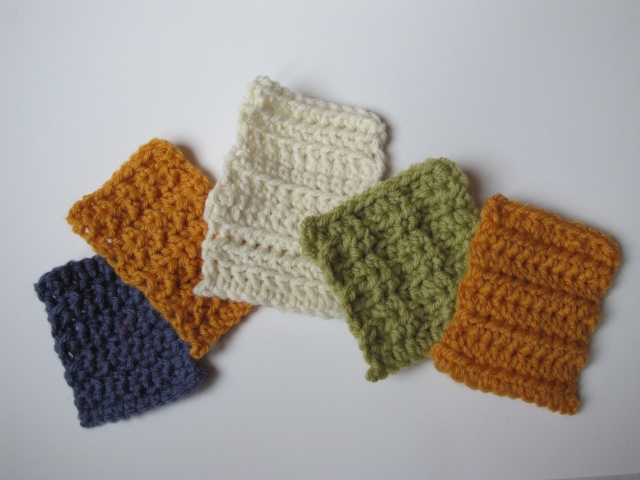
See you soon!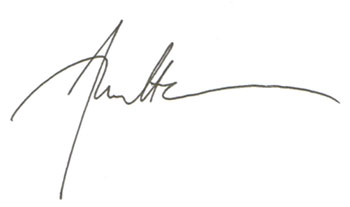

love the explanation thank you so very much, it was super helpful and clear, love from Erica, UK